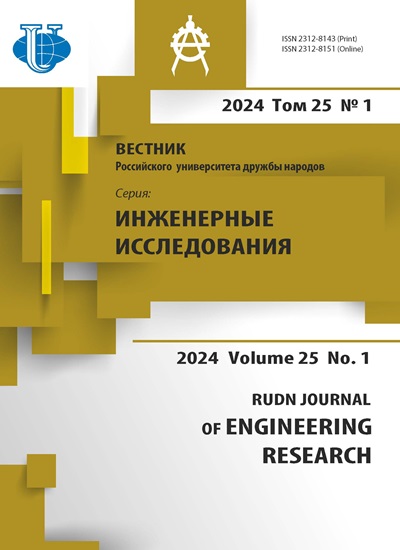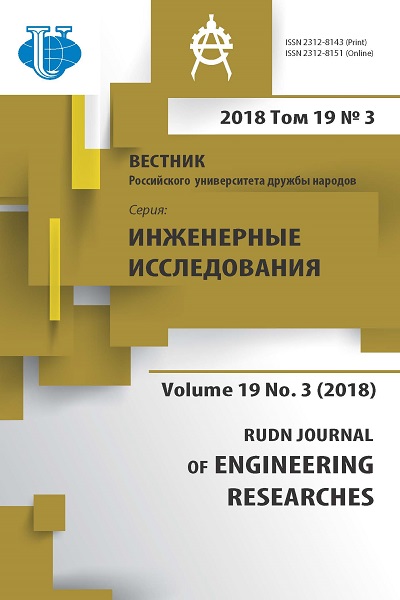Derivation and analysis of methods for calculation of axially loaded steel compression members based on different building codes
- Authors: Anikeev I.D1, Golikov A.V1
-
Affiliations:
- Volgograd State Technical University
- Issue: Vol 19, No 3 (2018)
- Pages: 299-316
- Section: Architecture and civil engineering
- URL: https://journals.rudn.ru/engineering-researches/article/view/19252
- DOI: https://doi.org/10.22363/2312-8143-2018-19-3-299-316
Cite item
Full Text
Abstract
The article presents the physical significance of the study of axially loaded steel compression members and the origin of accepted analytical models, which are the basis for the methods of their calculation in current building codes of CIS and European countries. An approximate solution of the problem of eccentrically loaded elastic compression member is given and analytical relationships for determining the buckling coefficient as a result of solving an analytical problem and as a result of applying building codes are obtained. Based on the results from solving the structural analysis problem, a solution for axially loaded compression member buckling coefficient, which is the ratio of such stress value from axial compression to the yield stress of steel at which the outermost fibers of the cross section yield, is given. When obtaining the solution of the buckling coefficient for axial compression, it is justified that the clarity of obtaining a solution is achieved by introducing the number Pi in place of the numerical values. It is indicated that the reason for shifting relative eccentricity from the ideal value of 0.2 is the impossibility of buckling at small slenderness ratios. It is justified that the calculation methods described in Eurocode and the building code of Russia (SNiP), despite the difference in the definition of nominal slenderness ratio, have common physical significance and their difference is only in approaches to the definition of random eccentricity. The building code approaches to calculating relative eccentricity included in buckling coefficient are stated and analyzed and their physical significance is described. The significance of relative eccentricity which is included in European and Russian codes is unfolded and the relationship between relative eccentricity and imperfections in the shape and type of cross-section is indicated. The significance of the imperfection factor in accordance with EN 1993-1-1: 2005 which depends on initial imperfections, the shape of the cross-section and the technology of member manufacture is explained and the application of approximating linear function, which reflects the technological factor of precision of manufacturing and inevitably arising imperfections, is justified. The significance of the coefficients of imperfection α and β, which are included in the Russian building code for steel structures, is unfolded.
About the authors
Ilya D Anikeev
Volgograd State Technical University
Author for correspondence.
Email: anikeevid@yandex.ru
Master student at the Department of Structures, Foundations and Safety of Buildings, Institute of Architecture and Construction, Volgograd State Technical University. Research interests: spaceframe structures, in particular, grid systems
1, Akademicheskaya str., Volgograd, 400074, Russian FederationAlexander V Golikov
Volgograd State Technical University
Email: alexandr_golikov@mail.ru
Candidate of Technical Sciences, Associate professor of the Department of Structures, Foundations and Safety of Buildings, Institute of Architecture and Construction, Volgograd State Technical University. Research interests: analysis and design of high-rise structures, structural assessment.
1, Akademicheskaya str., Volgograd, 400074, Russian FederationReferences
- Euler L. Metod nakhozhdeniya krivykh, obladayushchikh svoistvami maksimuma ili minimuma, ili reshenie izoperimetricheskoi zadachi, prinimaemoi v samom shirokom smysle [Method for finding curves with maximum or minimum properties or solving an isoparametric problem in its general sense]. Moscow: GTTI Publ., 1934. 600 p. (In Russ.)
- Yasinskij F.S. Izbrannye raboty po ustoichivosti szhatykh sterzhnei [Selected studies on column buckling]. Moscow: GITTL Publ., 1952. 430 p. (In Russ.)
- Lejtes S.D. Ustoichivost’ stal’nykh szhatykh sterzhnei [Buckling of steel columns]. Moscow: GILSA Publ., 1954. 567 p. (In Russ.)
- Timoshenko S.P. Ustoichivost’ uprugikh sistem [Buckling of elastic systems]. Moscow: GITTL Publ., 1955. 567 p. (In Russ.)
- Streleckij N.S. Materialy k kursu stal’nykh konstruktsii. Vyp. II. Ch. 1: Rabota szhatykh stoek [Materials for steel structures course. Isssue II. Part 1: Strength of elastic columns]. Moscow: Gosstroiizdat Publ., 1959. 284 p. (In Russ.)
- Volmir A.S. Ustoichivost’ deformiruemykh sistem [Buckling of deforming systmems]. Moscow: Nauka Publ., 1967. 984 p. (In Russ.)
- SP 16.13330.2017 «SNiP II-23-81* Stalnye konstrukcii» [Steel structures]. Moscow: Rosstandart Publ., 2017. 146 p. (In Russ.)
- SP 16.13330.2011 «SNiP II-23-81* Stalnye konstrukcii» [Steel structures]. Moscow: Rosstandart Publ., 2011. 178 p. (In Russ.)
- SNiP II-23-81* Stalnye konstrukcii [Steel structures]. Moscow: CITP Gosstroya USSR, 1990, 96 p. (In Russ.)
- Posobie po proektirovaniyu stalnyh konstrukcij k SNiP II-23-81* [Steel structures design manual for SNiP II-23-81*]. Moscow: CITP Gosstroya USSR, 1989. 150 p. (In Russ.)
- EN 1993-1-1 Eurocode 3 — Design of steel construction — Part 1-1: General rules and rules for buildings. Brussels: European committee for standardization, 2008. 91 p.
- Trahair N.S., Bradford M.A., Nethercot D.A., Gardner L. The Behaviour and Design of Steel Structures to EC3, Fourth edition. Abingdon: Taylor & Francis, 2008. 491 p.
- Aleksandrov A.V., Potapov V.D., Derzhavin B.P. Soprotivlenie materialov: uchebnik dlya vuzov. 3-e izd. ispr. [Strength of materials: University textbook. 3rd edition. Corrected]. Moscow: Vysshaya shkola Publ., 2003. 560 p. (In Russ.)
















